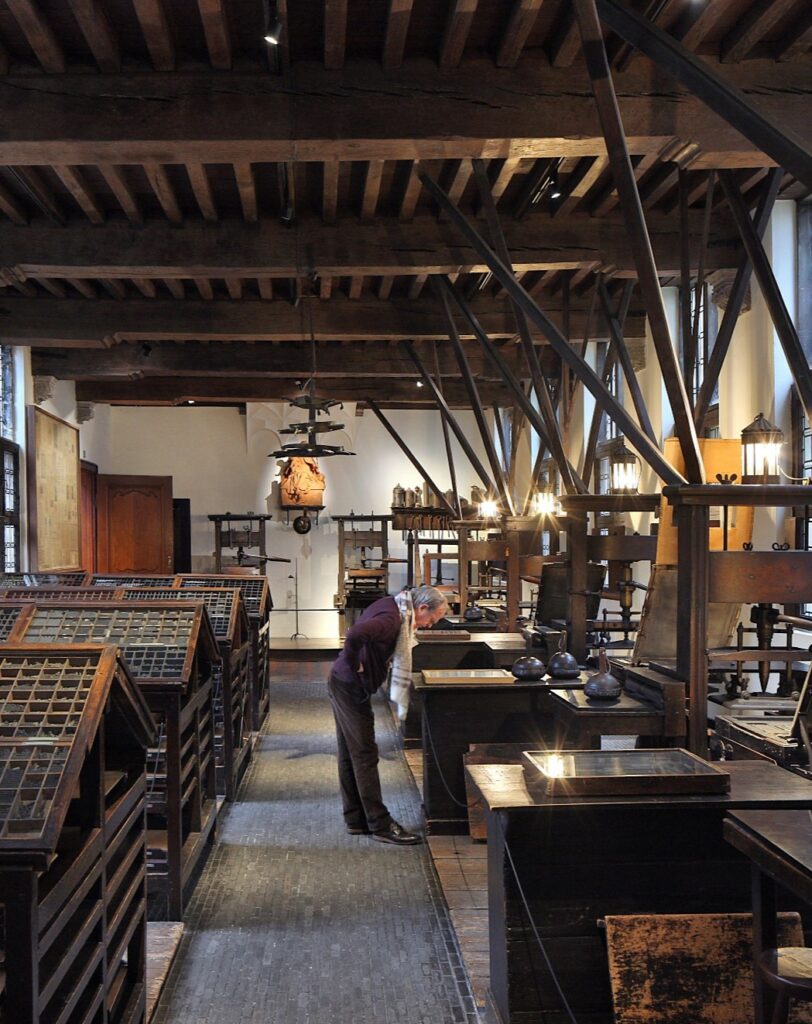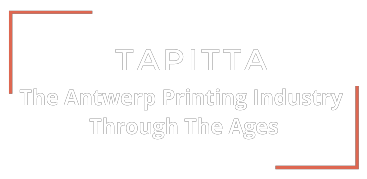Why this knowledge graph?
Focus on books, not on producers
Antwerp has by far the richest history in book printing of all cities in the world.
Although the first incunabula were printed elsewhere, by Johannes Gutenberg in Mainz and by Dirk Martens in Aalst, printers soon found their way to Antwerp that was becoming the merchant centre of Europe. Its rich merchants were always in the market for new investments and it was this type of capital that printers needed to finance their investments in paper and labour.
Geeraert Leeu printed the first book in Antwerp in 1481. It was the beginning of the long and tumultuous tradition in the city.
The most illustrious printers’ dynasty was of course Plantin and Moretus. Their home annex workshop is now the Museum Plantin-Moretus, see picture.
They were, however and fortunately, not the only producers in the Antwerp industry. Literally thousands of printers, typesetters, illustrators, bookbinders and -sellers have populated the hundreds of workshops and plants. Together they have produced millions of books, resulting in very fertile grounds for book historical research.
Thousands of titles have been catalogued by libraries and collectors. The producers, however, were only studied in monographs and scarce descriptions of periods and subjects. An enriched list of producers through the ages was never established.


Populating the knowledge graph
In 2013, Guido Thys, a linguist-turned-marketer-turned-book-collector with 30+ years experience in (customer) database management, started collecting data on Antwerp printers and publishers. By manual data entry from printed sources.
At first, only names of people and companies and their professions were registered in a spreadsheet.
OpenOffice
Very soon, however, it became clear that no clear lines could be drawn between printing and other activities such as binding and selling. As a consequence, all these professionals were also added and a simple OpenOffice relational database was created to house all these data.
The industrial ecosystem includes many other professions and interests, from ink makers to librarians. At the same time, it became obvious that limiting the data entry to names without information on such aspects as periods and addresses of activity would fall short of generating even a simple source for research and reference.
Graph Database
When it was decided to include the source of every bit of data in order to facilitate verification and follow-up research, it became obvious that a relational database was not the most suitable platform and a graph database was established.
Continue reading >>
